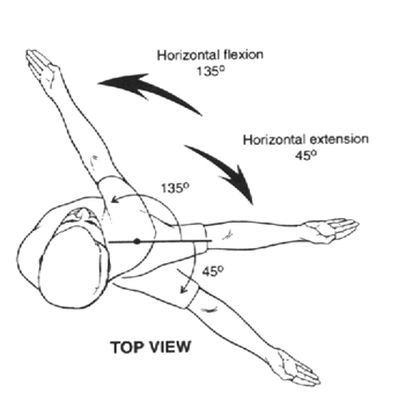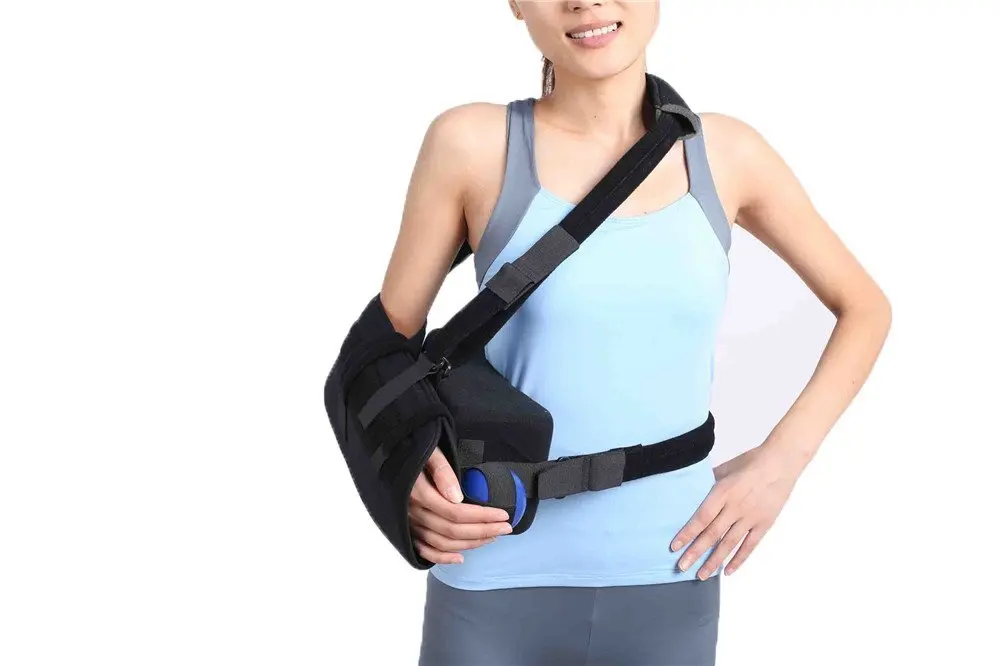

The ideal cross-body abduction is 30-50 degrees. Move the arms as far across the body as they can go.

Forward Flexion: Extend each arm in front of the body and raise it as high as possible.There are several range-of-motion tests that a doctor would do to assess your shoulder: The joint should allow the arm to move in multiple directions without any pain.

The shoulder moves with every arm motion. The shoulder's anatomy is complex, but all the different moving parts allow a wide range of motion in the joint. A fluid-filled sac called a joint capsule surrounds the joint and provides lubrication to ease movement in the shoulder. Protective tissues called the labrum line the joint socket. The shoulder joints are surrounded by muscles that keep the bones fitted tightly together. The shoulder also contains ligaments, the fibrous tissues that connect one bone to another bone. They stretch and contract during movement. Tendons are fibrous tissues that connect muscle to bone. The rotator cuff is a network of four tendons that connect the humerus to the scapula. The glenohumeral joint is where the ball at the top of the upper arm bone or humerus fits into the glenoid joint socket. The acromioclavicular joint is where the shoulder blade or scapula meets the collar bone or clavicle. The shoulder is two different joints and a network of connective tissue and muscles. Veterans who have a disability resulting from a shoulder injury during service may be entitled to VA benefits. For example, you may not be able to safely drive, lift objects, care for children, or maintain your home. Not being able to use your shoulder can affect your ability to work and limit daily life. Strain and disabilities to the shoulders are common during deployment, training, and combat. Many veterans leave the service with shoulder problems.


 0 kommentar(er)
0 kommentar(er)
